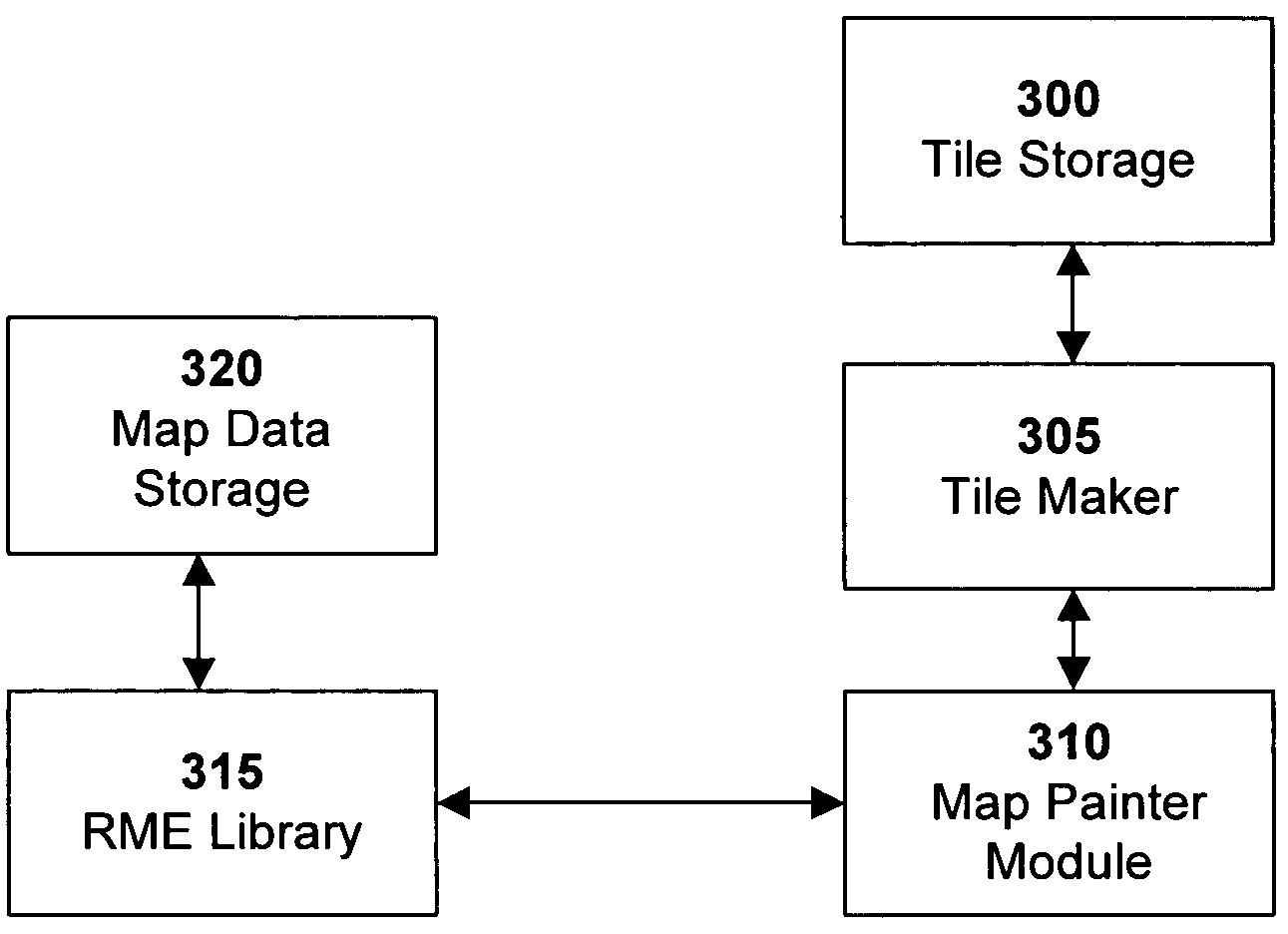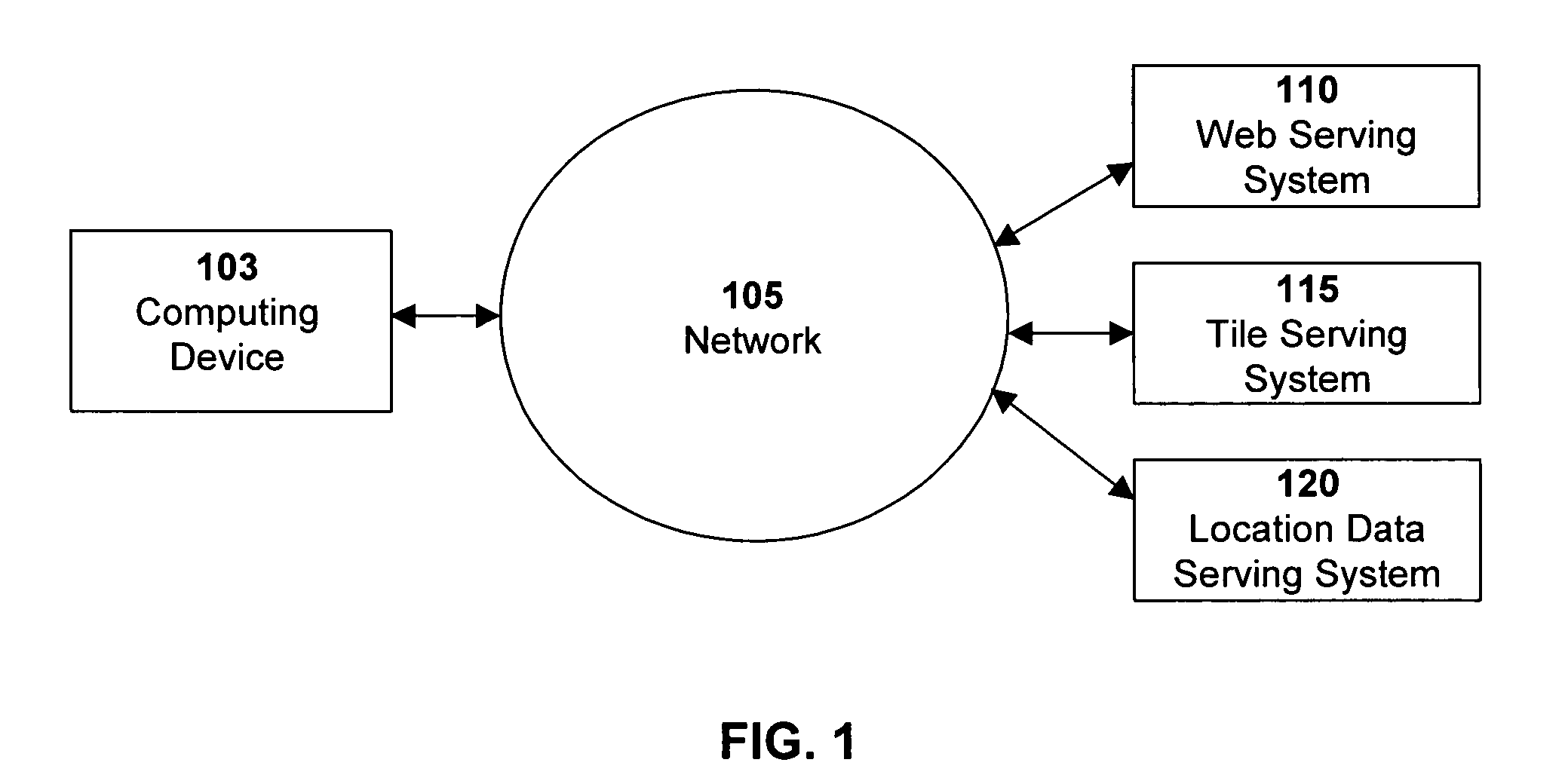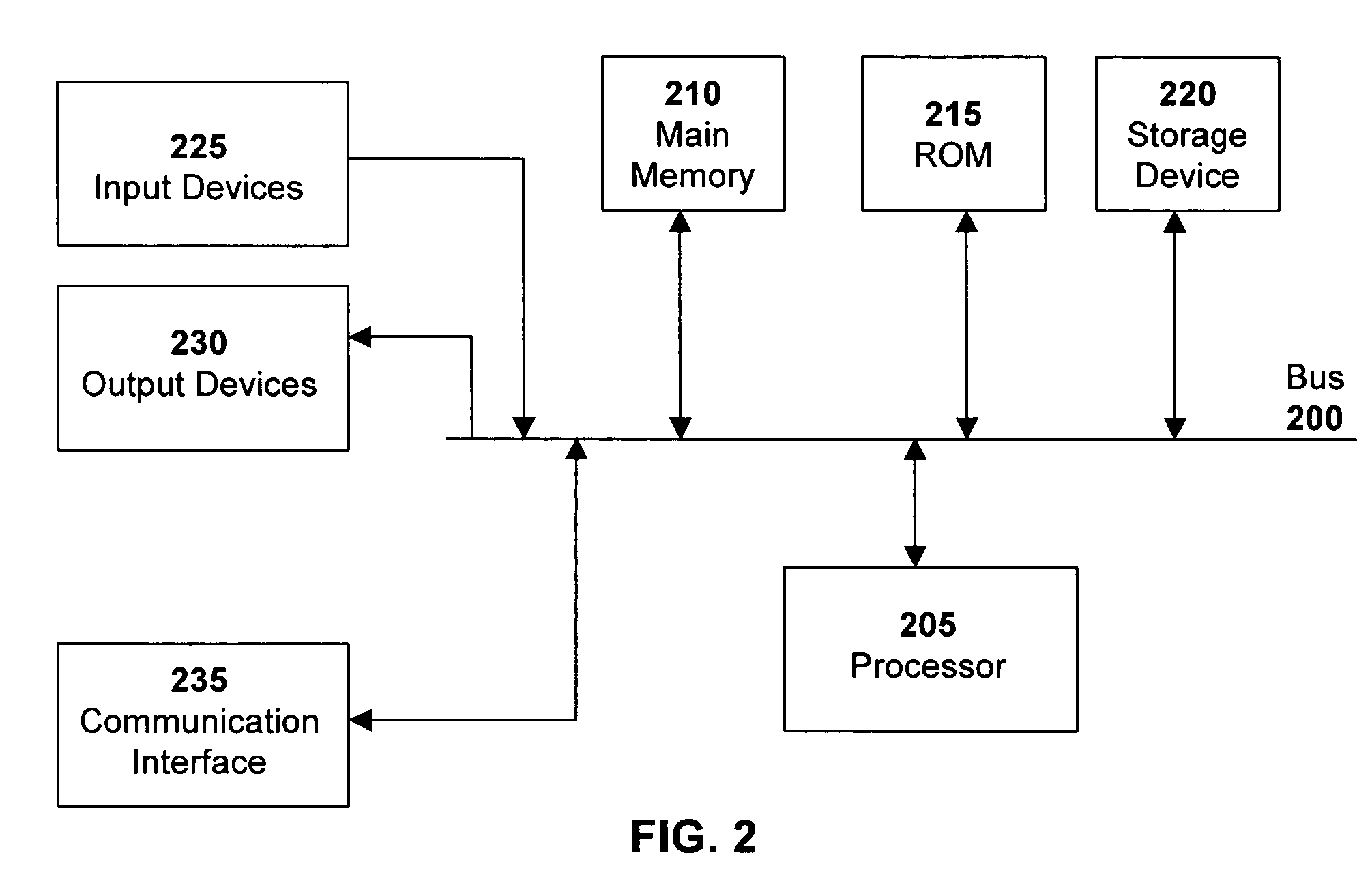Generating and serving tiles in a digital mapping system
a mapping system and tile technology, applied in the field of mapping systems, can solve the problems of system waste, large amount of data, and large amount of data, and achieve the effect of simplifying deployment and reducing the need for disk access
- Summary
- Abstract
- Description
- Claims
- Application Information
AI Technical Summary
Benefits of technology
Problems solved by technology
Method used
Image
Examples
Embodiment Construction
[0026]Digital tile-based mapping techniques are disclosed that enable efficient online serving of aesthetically pleasing maps. In one particular embodiment, an image tile-based digital mapping system is configured for generating map tiles during an offline session, and serving selected sets of those tiles to a client when requested. Also provided are solutions for handling map labels and other such features in a tile-based mapping system, such as for example when a map label or other feature crosses map tile boundaries. Various processing environments (e.g., servers or other computing devices) can be employed in the system.
[0027]The functionality described herein may be implemented by computer program instructions. These instructions can be loaded into a computer or other processing environment to produce a machine, such that the instructions are executed to carry out tile-based mapping techniques in accordance with various embodiments of the present invention. These computer progra...
PUM
 Login to View More
Login to View More Abstract
Description
Claims
Application Information
 Login to View More
Login to View More - R&D
- Intellectual Property
- Life Sciences
- Materials
- Tech Scout
- Unparalleled Data Quality
- Higher Quality Content
- 60% Fewer Hallucinations
Browse by: Latest US Patents, China's latest patents, Technical Efficacy Thesaurus, Application Domain, Technology Topic, Popular Technical Reports.
© 2025 PatSnap. All rights reserved.Legal|Privacy policy|Modern Slavery Act Transparency Statement|Sitemap|About US| Contact US: help@patsnap.com



